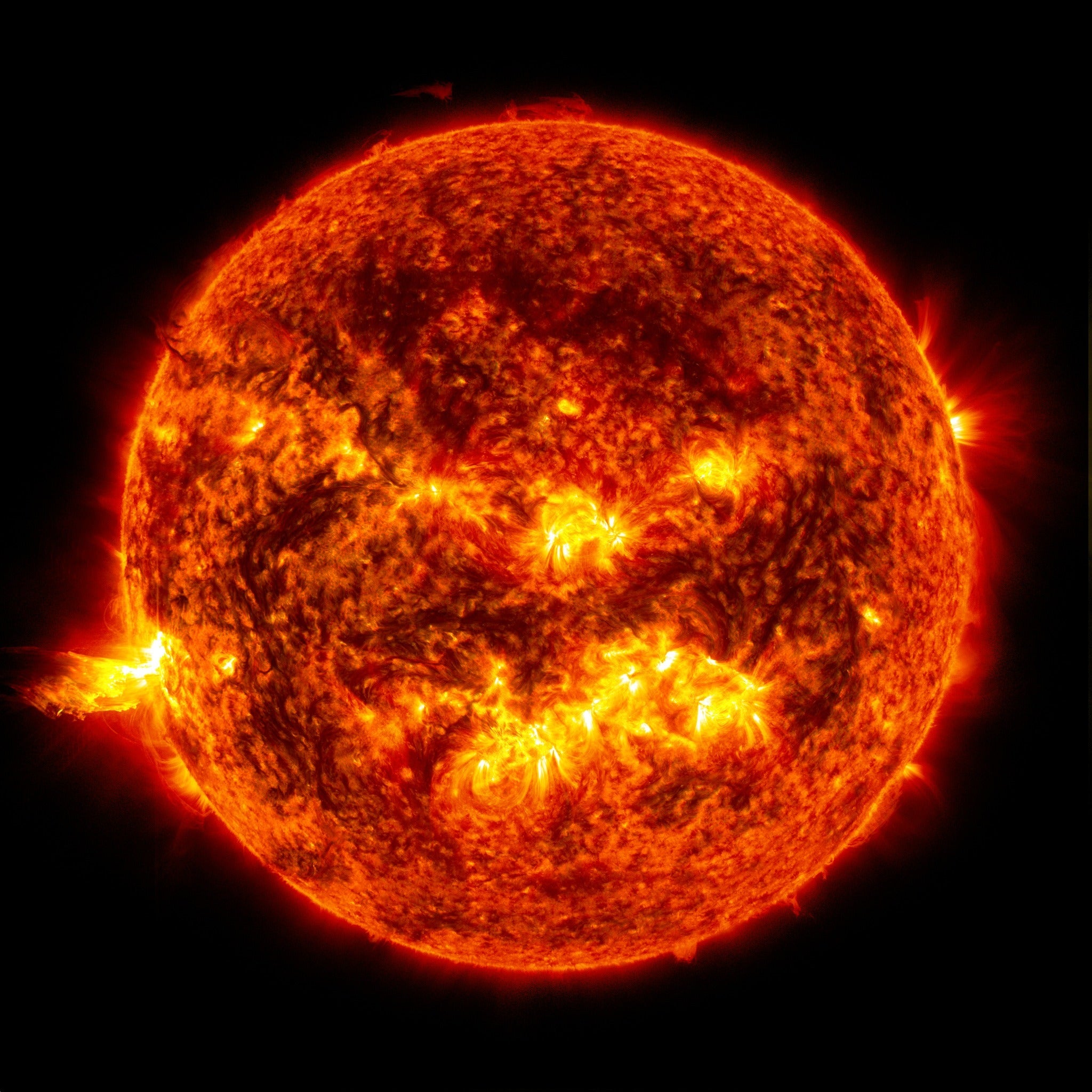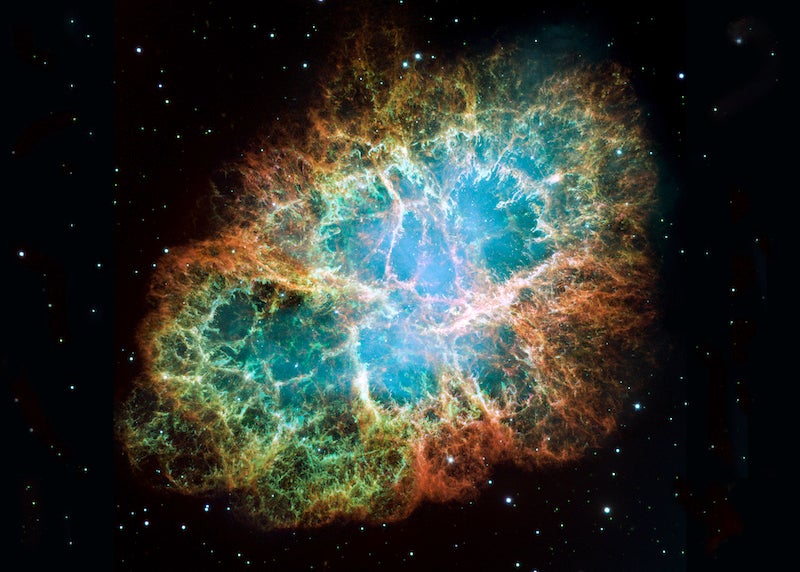On the other hand, if two neutron stars form a close binary system, then their orbits will slowly shrink. Unless a third star disturbs the system, the neutron stars will ultimately collide. A neutron-star binary system can form if both massive stars in a normal-star binary system undergo supernova explosions themselves and form neutron stars — as long as the explosions don’t disrupt the system. Or perhaps, such systems form in dense stellar environments, when a neutron-star and normal-star binary pass closely to another such system. The two systems can exchange members.
Astronomers know of six neutron-star binaries, so it appears likely neutron-star collisions do occur in the universe. Usually, astronomers observe one of the neutron stars in the pair as a radio pulsar (and a double pulsar system was recently discovered). Collisions between neutron stars are so violent they have been linked with many energetic phenomena, including gamma-ray bursts.
Moreover, the fast, periodic motions that occur as the stars spiral together should generate gravitational waves. Scientists anticipate several current ground-based observatories (including both the Laser Interferometer Gravitational-wave Observatories [LIGO] in Hanford, Washington, and Livingston, Louisiana) may detect these waves. In addition, the first space-based gravitational-wave observatory, Laser Interferometer Space Antenna (LISA), is slated for a 2015 launch and will look for lower-frequency gravitational waves — those caused by large mergers.
An accurate description of these collisions pushes our theoretical understanding of matter and gravity to the limit. Astrophysicists regard these collisions as theoretical test beds. They allow us to explore how current computational methods hold up under extreme events.
Unfortunately, astrophysicists don’t yet know the details of what happens when two neutron stars smack together. A full understanding of the collision uses Einstein’s theory of general relativity and the mechanics of neutron stars. Our understanding of the details is still evolving. The outcome likely depends on the density, pressure, and temperature of material within neutron stars’ interiors — factors described by the so-called equation of state (EOS). The true properties of superdense neutron-star matter are still uncertain. We do not yet have all the necessary data to run a simulation and see what happens in detail.
Nevertheless, we can sketch out the basics. Such a collision will occur at relativistic speeds, with a total energy approaching 1055 ergs — 10,000 times the energy of a supernova. The collision is inelastic, meaning the objects stick together. Think of two gummy balls slamming together. As the stars touch and merge, a strong shock wave forms within them. Matter streaming through the shock decelerates. Its kinetic energy turns into a huge amount of thermal energy — the material reaches temperatures higher than 500 billion kelvins, compared to the Sun’s 5,800 K surface.
The collision rocks the merged object, which probably ripples with large-scale vibrations. These motions should produce gravitational waves. The merger creates a flood of neutrinos and anti-neutrinos. As these particles interact, they will annihilate one another, producing a super high-energy fireball. Recent findings support the connection of short-duration (less than 2 seconds) gamma-ray bursts with such mergers.
Odds are, such a collision forms a black hole. The maximum mass of a neutron star depends strongly on its rotation mechanics. Because we don’t yet know the correct EOS, we don’t know how massive neutron stars can get. Most estimates suggest the combined mass of two typical neutron stars (each roughly 1.4 solar masses) is too high for the merged object to avoid collapsing into a black hole unless the object ejects enough matter during the merger.
If all the kinetic energy converts to heat in the collision, quickly and efficiently, the merged object might avoid collapse for a few seconds. This would allow more particles and radiation to escape — possibly enough for astronomers to detect. Collapse might also be slowed if the merged object spins fast enough. Recent calculations suggest the neutron-star system’s dynamics control the merger, which occurs in fractions of a millisecond. If the black hole forms promptly, most of the energy associated with the collision will be sucked down the hole into oblivion.
So, it may be that one of the most extreme events in the universe ends with more of a fizzle than a pop. — TOD STROHMAYER, NASA GODDARD SPACE FLIGHT CENTER, GREENBELT, MARYLAND










